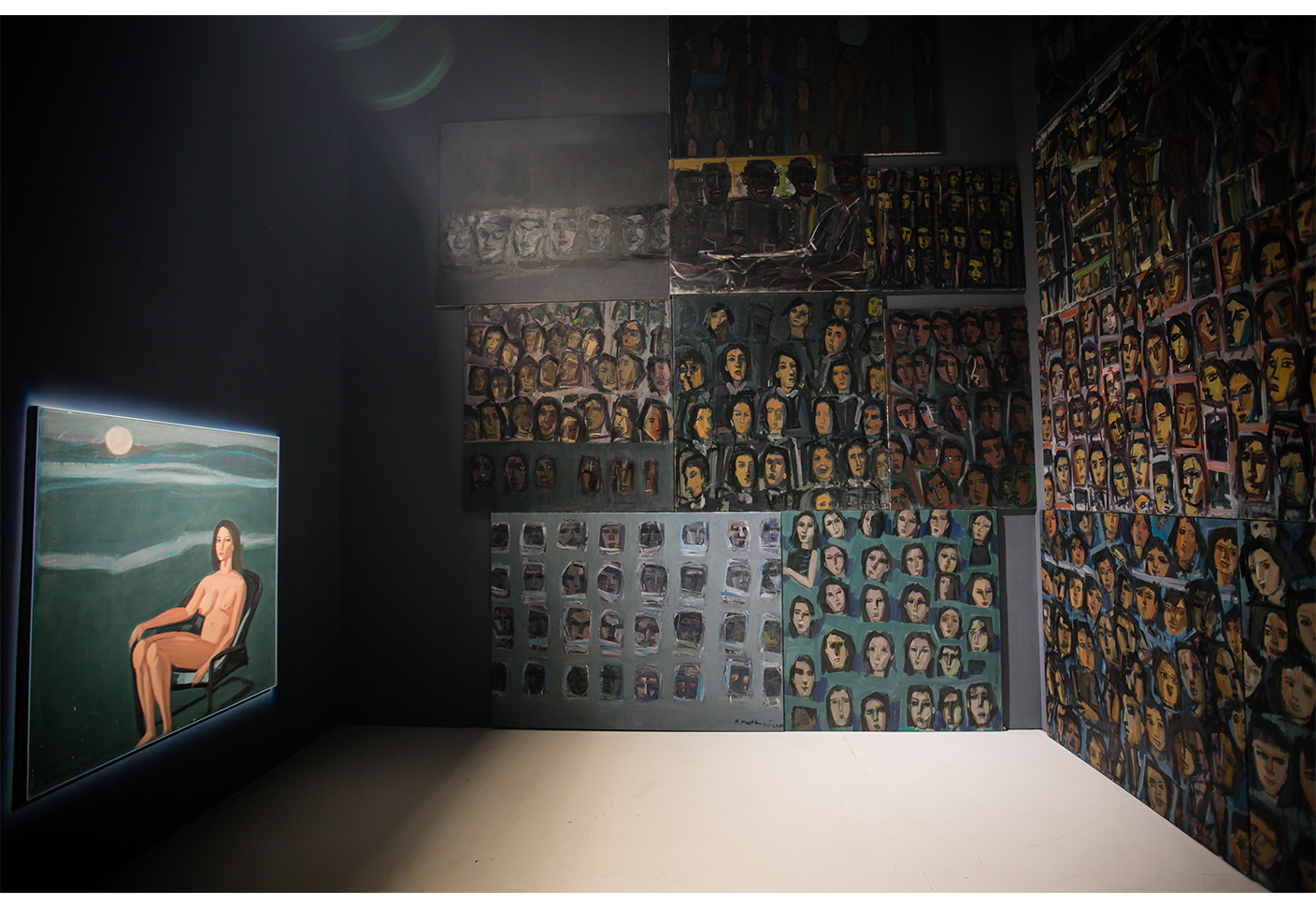Hasan Nallbani’s painting is not marked by the historical stages in which he lived, at least not in a classical way, but it looks as if he swam between them, almost floating, remaining true to the original nature of his creativity. Despite his long creative life (it is the 85th anniversary of the artist’s life), his outlook is fresh and contemporary, effortlessly but in a resourceful way. He lives and works in the same studio of his youth, once suburban, today one of the most dynamic areas of the capital. He observes life with the serenity of someone who knows it, simply absorbing its sensations, as a tribute to an externally observed linear life without wanting to find a hero.
You can just imagine the artist how after wandering into the city, he returns to his studio and paints the sensations of the outside, of unknown people passing him by, whom he seeks to give sensations without a past or a future. He observes the lives of others in their course, creating a state that is not the pursuit of others but the pursuit of himself. Inevitably, the envision of releasing the desire for hidden observation has the appearance of the night.
The exhibition is composed as an experience, as a movement that begins inside another and shapes up within ourselves, to be extended into a common space where at first we are the invisible observer and then the judged observer, with no middle way. The lives of others occur while being observed beyond the duskiness of summer nights where the sun is the moon and clouds are midnight stars. Images and characters convey emotional silent states, although strong, seemingly built by untold thoughts and secret desires. Where the characters are alone and turning their backs on you or looking straight into the eye, you feel the painter standing passively towards their lives, he observes them without interfering with their experiences, and he also paints them in suspense, slouching on the chairs where they sit, or in uncomfortable positions where they will remain in eternal tension.
You never know, from one tableau to another, which way to choose, because it seems like the artist has given them the freedom of choice. But for you they exist in that particular moment, without a past. The feeling that something external keeps them in suspense comes not only from the characters expressions, but also from the structure and the colours of the scenes painted, reminding you, more profoundly but inevitably, that in a society where one cannot live without the other, the individual, experiences freedom as a burden.
And as a result of this consciousness and this experience, you are the others. It is the painter himself. Those who were hidden observers, are now facing you , with magnified faces beyond human proportions, with expressions that no longer stand in suspense, now they laugh, mock, hate, frighten, tend to record each other’s movements as if the lives of others belong to them. These faces resemble sagomas who extend vertically multiplying, you find them all around you and over you, with the overwhelming feeling that you are not the master of your own life. It is as if these hundreds of faces observing you are the setting of a moralistic drama where the judged is forced to make a predetermined decision.
But at the age of 85, fear works quite differently. It’s no longer life that scares you, it is not people either. And for the same reason that the painter allows the lives of others in their course, without touching them; In front of the disfigured observing faces that seem to be screaming, stands a serene, confident woman-girl who observes all of them at once, completely naked, with that certainty shown during the act of a smile about to appear on the lips, observant and observed neither observant nor observed. People don’t change, and yet the world does.










